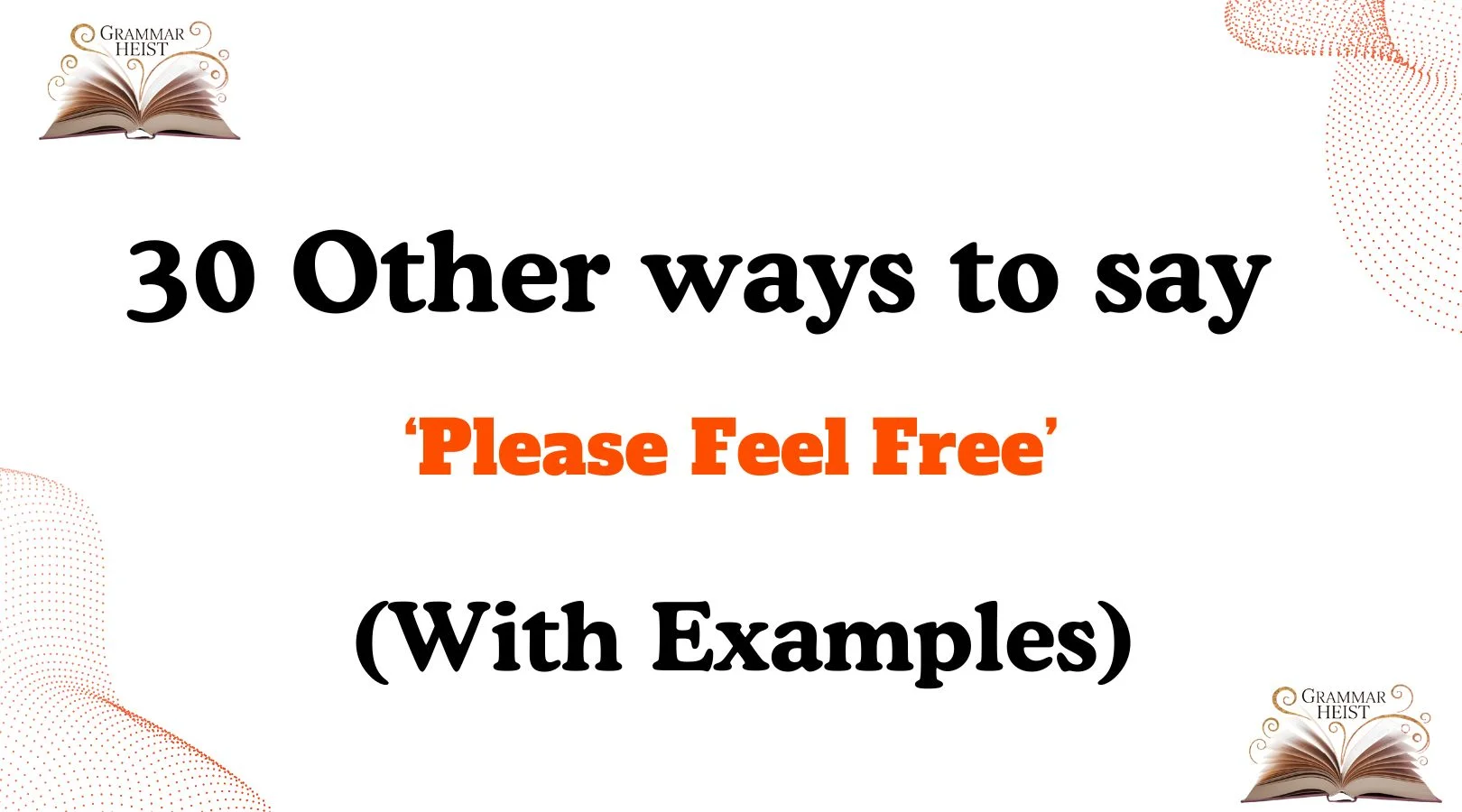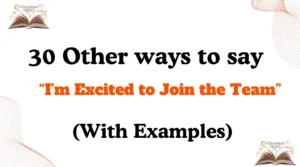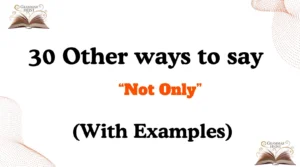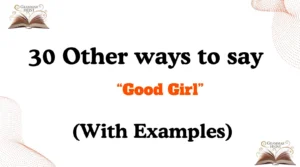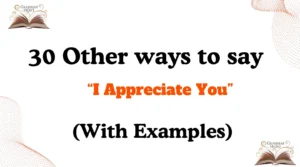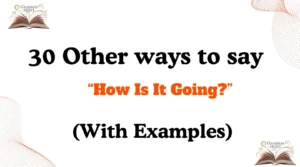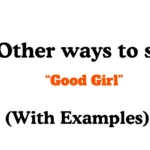Finding the right words to express warmth, care, and openness can make a huge difference in how people perceive your message. Instead of always saying “please feel free”, you can use thoughtful alternatives that sound more personal, empathetic, and genuine. Whether in professional emails, friendly chats, or supportive messages, these alternatives help you connect with others on a deeper level.
What Does “Please Feel Free” Mean?
The phrase “please feel free” is commonly used to show permission, encouragement, or reassurance. It tells someone they are welcome to take an action without hesitation or fear of bothering you.
Is It Professional/Polite to Say “Please Feel Free”?
Yes, it’s both professional and polite. However, depending on the situation, it may sound too formal or repetitive. Using variations can make your tone more approachable, friendly, and human-centered.
Pros or Cons of Using “Please Feel Free”
Pros:
- Universally understood and polite.
- Works in both casual and formal communication.
- Shows openness and encouragement.
Cons:
- Can feel overused or generic.
- May sound impersonal in warm settings.
- Doesn’t always reflect unique personality or intent.
Synonyms For “Please Feel Free”
- Don’t Hesitate
- You’re Welcome To
- Go Ahead
- Don’t Be Shy
- You Can Always
- Don’t Worry About It
- I’d Be Happy To
- Open Invitation
- Anytime
- It’s No Trouble
- Reach Out Anytime
- I’m Here If You Need
- By All Means
- You’re Invited To
- I Don’t Mind At All
- Go For It
- Don’t Think Twice
- Knock Yourself Out
- No Problem At All
- Happy To Help
- I’d Love To Help
- My Door Is Always Open
- Consider Yourself Welcome
- Make Yourself At Home
- Be My Guest
- I’m Available Anytime
- It Would Be My Pleasure
- You Have Permission
- I’d Be Delighted To
- Feel Comfortable To
1. Don’t Hesitate
Scenario: Encouraging someone to reach out when needed.
Examples:
- “Don’t hesitate to call me if you need help.”
- “Don’t hesitate to share your thoughts.”
- “Don’t hesitate to ask questions.”
Tone: Supportive, warm.
Explanation: This phrase reassures the listener that asking for help or expressing themselves is completely welcome.
2. You’re Welcome To
Scenario: Giving someone permission in a professional tone.
Examples:
- “You’re welcome to use my office anytime.”
- “You’re welcome to join our discussion.”
- “You’re welcome to provide feedback.”
Tone: Polite, respectful.
Explanation: Slightly more formal, this phrase is excellent for workplace settings.
3. Go Ahead
Scenario: Encouraging immediate action without delay.
Examples:
- “Go ahead and send me the details.”
- “Go ahead, I’d love to hear your thoughts.”
- “Go ahead and start whenever you’re ready.”
Tone: Friendly, casual.
Explanation: Makes communication feel lighter and conversational.
4. Don’t Be Shy
Scenario: Encouraging openness in casual or friendly settings.
Examples:
- “Don’t be shy—tell me what you think.”
- “Don’t be shy about asking questions.”
- “Don’t be shy, reach out anytime.”
Tone: Warm, approachable.
Explanation: Creates a friendly atmosphere where people feel safe to speak.
5. You Can Always
Scenario: Showing long-term openness.
Examples:
- “You can always reach out if you need guidance.”
- “You can always ask me for advice.”
- “You can always count on me.”
Tone: Reassuring, caring.
Explanation: Highlights reliability and ongoing support.
6. Don’t Worry About It
Scenario: Giving reassurance and permission.
Examples:
- “Don’t worry about it, just ask.”
- “Don’t worry about it—call me anytime.”
- “Don’t worry about it, I’m happy to help.”
Tone: Relaxed, friendly.
Explanation: Removes pressure and encourages comfort.
7. I’d Be Happy To
Scenario: Expressing willingness to help.
Examples:
- “I’d be happy to review your draft.”
- “I’d be happy to answer any questions.”
- “I’d be happy to chat with you.”
Tone: Supportive, kind.
Explanation: Shows genuine willingness to assist.
8. Open Invitation
Scenario: Leaving the door open for someone to act anytime.
Examples:
- “Consider this an open invitation to join us.”
- “You have an open invitation to ask questions.”
- “It’s an open invitation—reach out anytime.”
Tone: Inclusive, thoughtful.
Explanation: Makes the recipient feel welcome without restrictions.
9. Anytime
Scenario: Showing availability without limits.
Examples:
- “Call me anytime.”
- “I’m here for you anytime you need advice.”
- “Message me anytime—it’s no bother.”
Tone: Caring, supportive.
Explanation: Short and sweet, yet full of warmth.
10. It’s No Trouble
Scenario: Reassuring someone they’re not bothering you.
Examples:
- “It’s no trouble if you reach out late.”
- “It’s no trouble at all to help.”
- “It’s no trouble, really—just ask.”
Tone: Reassuring, comforting.
Explanation: Removes guilt or hesitation from the other person.
11. Reach Out Anytime
Scenario: Inviting someone to contact you without hesitation.
Examples:
- “Please reach out anytime you need clarification.”
- “Reach out anytime, even if it’s a small question.”
- “You can reach out anytime—I’ll be here.”
Tone: Welcoming, approachable.
Explanation: This phrase emphasizes availability and support, assuring the person you’re always open to communication.
12. I’m Here If You Need
Scenario: Offering support whenever necessary.
Examples:
- “I’m here if you need someone to talk to.”
- “I’m here if you need help with the project.”
- “I’m here if you need any guidance.”
Tone: Supportive, caring.
Explanation: Shows empathy and makes people feel they can count on you in tough or uncertain times.
13. By All Means
Scenario: Giving enthusiastic permission.
Examples:
- “By all means, share your perspective.”
- “By all means, let me know if you need assistance.”
- “By all means, take the time you need.”
Tone: Encouraging, positive.
Explanation: Adds energy to your support, showing that you welcome their action wholeheartedly.
14. You’re Invited To
Scenario: Creating an atmosphere of inclusion.
Examples:
- “You’re invited to contribute your ideas.”
- “You’re invited to join us anytime.”
- “You’re invited to share feedback.”
Tone: Inclusive, polite.
Explanation: Helps others feel valued and welcomed into the conversation or activity.
15. I Don’t Mind At All
Scenario: Reassuring someone they’re not inconveniencing you.
Examples:
- “I don’t mind at all if you ask me questions.”
- “I don’t mind at all if you reach out late.”
- “I don’t mind at all helping with this task.”
Tone: Reassuring, relaxed.
Explanation: Clears away feelings of guilt the other person may have about bothering you.
16. Go For It
Scenario: Motivating someone to take action.
Examples:
- “Go for it—you’ve got this!”
- “Go for it, I’d love to see what you create.”
- “Go for it, no need to wait.”
Tone: Energetic, encouraging.
Explanation: A short, powerful motivator that makes you sound enthusiastic and supportive.
17. Don’t Think Twice
Scenario: Giving someone confidence to act freely.
Examples:
- “Don’t think twice about reaching out.”
- “Don’t think twice—ask away.”
- “Don’t think twice, I’m happy to help.”
Tone: Friendly, reassuring.
Explanation: Removes hesitation by signaling that their request is completely okay.
18. Knock Yourself Out
Scenario: Offering informal, enthusiastic permission.
Examples:
- “Knock yourself out—use my notes.”
- “Knock yourself out if you want to try.”
- “Knock yourself out with the project ideas.”
Tone: Playful, casual.
Explanation: Best used in informal contexts, showing relaxed encouragement.
19. No Problem At All
Scenario: Reassuring someone they aren’t causing trouble.
Examples:
- “No problem at all, I’ll explain it again.”
- “No problem at all if you need more time.”
- “No problem at all, happy to answer questions.”
Tone: Relaxed, kind.
Explanation: Softens the conversation and assures them you’re happy to help.
Read More:30 Other Ways to Say ‘Thank You for Your Kind Words’ (With Examples)
20. Happy To Help
Scenario: Making it clear you’re willing to assist.
Examples:
- “Happy to help whenever you need.”
- “I’m always happy to help with your projects.”
- “Happy to help—just let me know.”
Tone: Warm, generous.
Explanation: Expresses genuine kindness and readiness to assist.
21. I’d Love To Help
Scenario: Offering proactive assistance.
Examples:
- “I’d love to help with the design.”
- “I’d love to help you get started.”
- “I’d love to help, just tell me when.”
Tone: Enthusiastic, caring.
Explanation: Stronger than “happy to help,” this phrase adds sincerity and warmth.
22. My Door Is Always Open
Scenario: Making yourself approachable, especially at work.
Examples:
- “My door is always open for questions.”
- “My door is always open if you need advice.”
- “My door is always open, so stop by anytime.”
Tone: Supportive, approachable.
Explanation: Symbolizes accessibility and builds trust.
23. Consider Yourself Welcome
Scenario: Encouraging inclusion.
Examples:
- “Consider yourself welcome to join us anytime.”
- “Consider yourself welcome to share your thoughts.”
- “Consider yourself welcome to participate.”
Tone: Inclusive, polite.
Explanation: A polite and thoughtful way to make others feel valued.
24. Make Yourself At Home
Scenario: Creating comfort in social settings.
Examples:
- “Please, make yourself at home here.”
- “Make yourself at home and feel comfortable.”
- “Make yourself at home—no need to be formal.”
Tone: Friendly, warm.
Explanation: Ideal for social situations where you want people to feel relaxed and welcome.
25. Be My Guest
Scenario: Allowing someone to proceed freely.
Examples:
- “Be my guest, take a look.”
- “Be my guest and use my resources.”
- “Be my guest, go ahead with your idea.”
Tone: Polite, encouraging.
Explanation: Shows willingness to share or give permission graciously.
26. I’m Available Anytime
Scenario: Offering constant availability.
Examples:
- “I’m available anytime for questions.”
- “I’m available anytime to review your work.”
- “I’m available anytime you’d like to chat.”
Tone: Supportive, professional.
Explanation: Best for work or formal settings, emphasizing consistent support.
27. It Would Be My Pleasure
Scenario: Expressing eagerness to help.
Examples:
- “It would be my pleasure to assist you.”
- “It would be my pleasure to host the meeting.”
- “It would be my pleasure to help with that.”
Tone: Respectful, formal.
Explanation: Adds a polite and elegant touch, perfect for professional conversations.
28. You Have Permission
Scenario: Granting clear approval.
Examples:
- “You have permission to start early.”
- “You have permission to use my resources.”
- “You have permission to share the file.”
Tone: Formal, direct.
Explanation: Works well when you need to communicate authority and clarity.
29. I’d Be Delighted To
Scenario: Offering help warmly and enthusiastically.
Examples:
- “I’d be delighted to support your project.”
- “I’d be delighted to show you how it works.”
- “I’d be delighted to help organize the event.”
Tone: Warm, refined.
Explanation: Stronger and more emotional than “happy to help,” expressing genuine joy in helping.
30. Feel Comfortable To
Scenario: Encouraging openness and ease.
Examples:
- “Feel comfortable to ask any questions.”
- “Feel comfortable to reach out anytime.”
- “Feel comfortable to share your honest opinion.”
Tone: Gentle, reassuring.
Explanation: Emphasizes psychological safety, helping others feel they won’t be judged.
Conclusion
Finding the right words to express openness, care, and encouragement goes a long way in building trust and connection. While “please feel free” is polite and professional, it can sometimes sound routine or impersonal. By using these 30 thoughtful alternatives, you can make your messages more personal, empathetic, and memorable.
Whether you’re writing a professional email, welcoming someone into a conversation, or reassuring a friend, the phrases you choose can help others feel valued, safe, and supported.
So next time, instead of reaching for the same old phrase, try one of these alternatives—and watch how your communication becomes more genuine, warm, and impactful.

Emma Brooke is a passionate advocate for effective communication and language mastery. As a dedicated professional in the field of grammar and writing, Emma brings a wealth of knowledge and expertise to those seeking to improve their linguistic skills. With a focus on clarity, precision, and style, Emma Brooke is committed to helping individuals refine their language use to communicate confidently and effectively.
